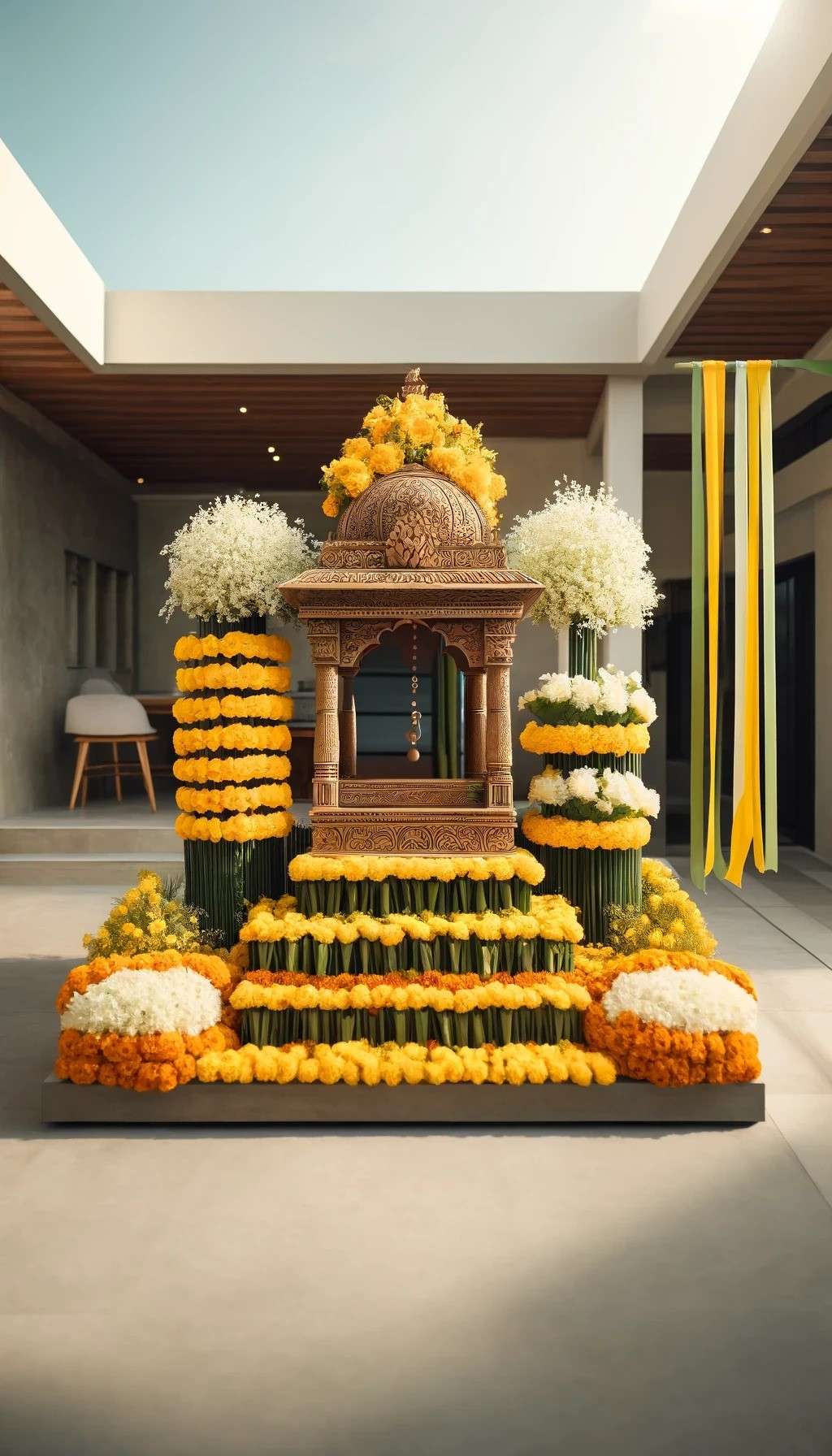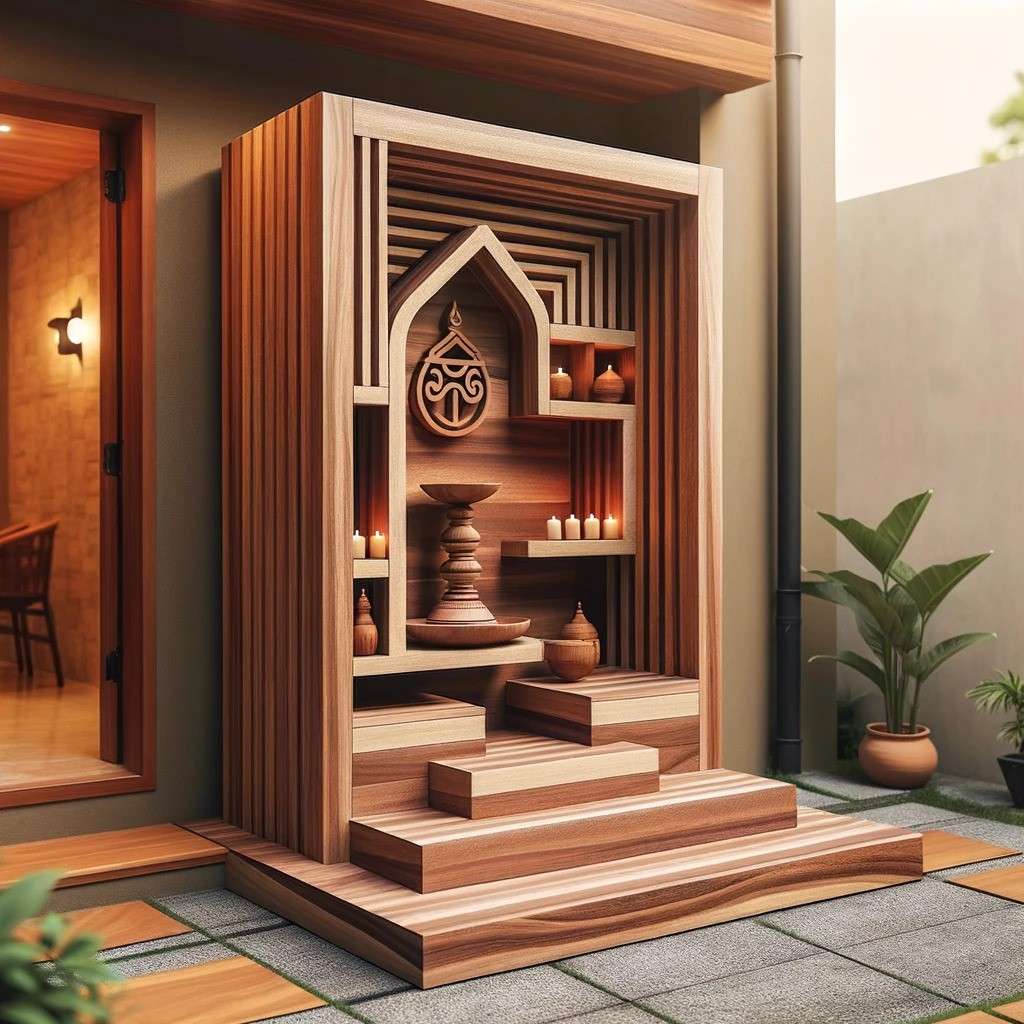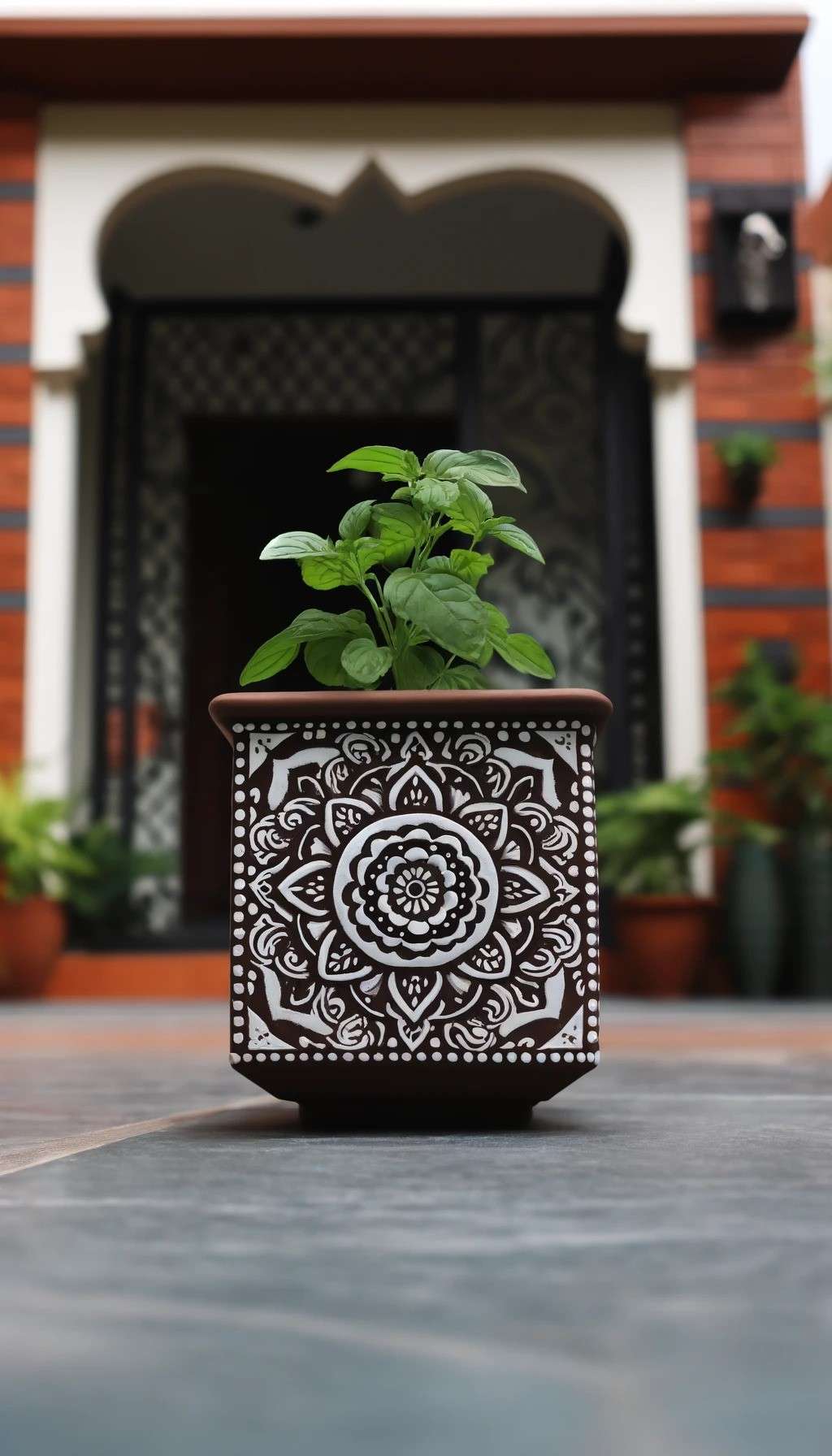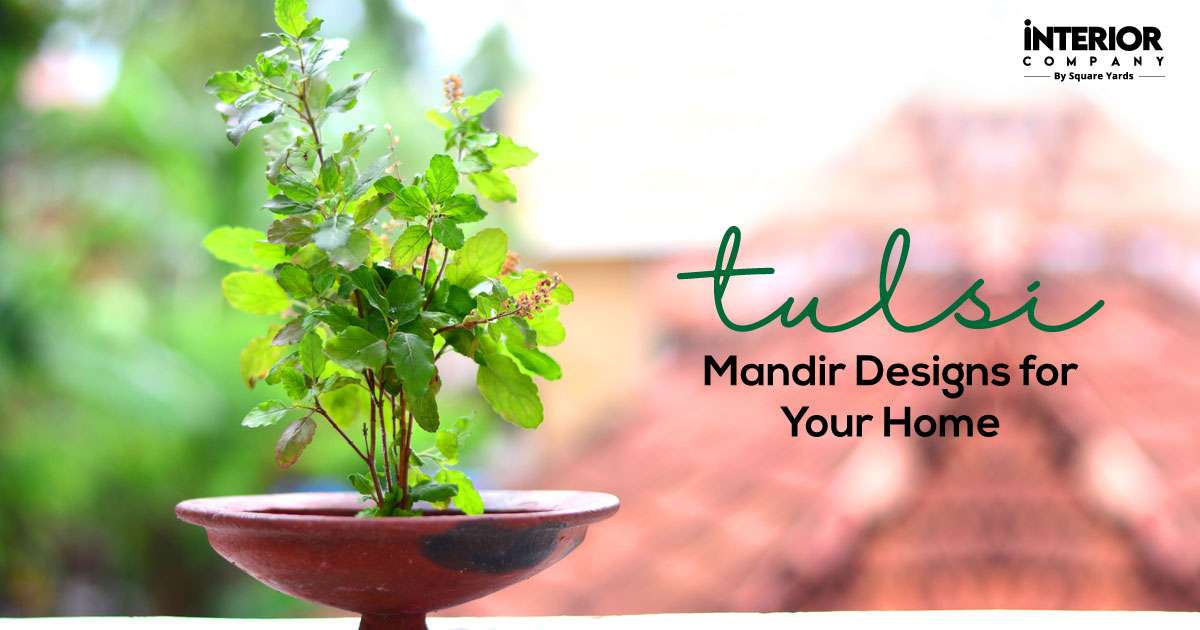The Tulsi plant is of great importance in Hindu culture. It is commonly called Holy Basil and is used as an herb in traditional remedies. Cultivating Tulsi in your home can bring prosperity, health, and spiritual well-being. Many households dedicate a special space known as the Tulsi Mandir or Tulsi Chaura to pay homage to this revered plant.
Importance of a Tulsi Mandir in a Hindu Home
Before we explore the various Tulsi Mandir designs, it is important to understand the significance of a Tulsi Mandir in a Hindu home.
The Tulsi Mandir, a sacred space devoted to the Tulsi plant, holds great spiritual and cultural significance in Hindu homes. It is considered an earthly manifestation of the goddess Tulsi, a form of Lakshmi, the goddess of wealth and consort to Lord Vishnu. Having a Tulsi Mandir in one’s home is believed to invite divine presence and blessings. Tending to and nurturing a Tulsi plant is seen as an act of dedication, thought to purify the environment of the home and the minds of those who dwell within it, fostering an atmosphere of spiritual focus. It often serves as a daily worship and ritual centre in Hindu households. It is customary for family members to gather around the Tulsi Mandir to pray, light candles, and give water to the plant, regarded as an act of worship to Lord Vishnu and Goddess Lakshmi.
Choosing the Best Location for Your Tulsi Mandir
Selecting the perfect spot for your tulsi mandir is an important decision. As per the principles of Vastu Shastra, the north, east, or northeast direction of your house is the most appropriate location for it. This placement is said to attract good fortune and prosperity. However, if you cannot position the tulsi mandir in any of these directions, you can opt for any other direction, as long as it is not in the bedroom, kitchen, or bathroom.
Home Tulsi Mandir Design Ideas
Here are some inspired design ideas for incorporating a Tulsi Mandir into your home:
Granite Home Tulsi Mandir Design

The Granite Tulsi mandirs present an innovative take on the conventional style. Granite’s tough and smooth look brings a modern feel to the holy place. The design showcases minimalistic patterns and clear edges, highlighting the elegance of the black granite.
Classic Red Sandstone Tulsi Mandir Design

This style exudes a classic charm and sophistication. Its elaborate carvings and fine details highlight the artistry that characterises Indian structural design. Red sandstone, with its sturdy nature, ability to withstand harsh weather conditions and pleasing aesthetics, is preferred for such modern tulsi chaura design. It is relatively easy to carve and shape, thus ideal for intricate patterns typical of Tulsi mandirs. The stone’s reddish hue enhances the sanctity of the temple.
Marble Tulsi Mandir for Your Home

Marble designs for Tulsi mandir exude a calming aura with a hint of extravagance and sophistication. These designs have become increasingly popular due to their timeless elegance and grandeur. Add intricate carvings, delicate patterns, and elaborate details to enhance the aesthetic appeal of your Tulsi Mandir. For inspiration, admire the stunning marble architecture of the Tulsi Manas Mandir in Varanasi.
Stone Tulsi Mandir Design

Tulsi mandirs are a sight to behold, especially when crafted from various stones with rustic charm and earthy appeal. Using sandstone, limestone, or marble in constructing these mandirs adds a unique texture and colour, lending character to the sacred space. Moreover, these stones are also commonly used in temples, making them a popular choice for Tulsi mandir designs. So, if you are looking for a sacred space that exudes natural beauty and elegance, a Tulsi mandir crafted from different types of stone is worth considering.
Tulsi Mandir Design with Flowers

Adding flowers to the design of your Tulsi mandir is a wonderful way to infuse the sacred space with vibrant colours and a fresh, invigorating energy. These beautiful blooms make for perfect decorations during special occasions like Tulsi Pooja, and combining various coloured flowers will truly transform your mandir into a stunning masterpiece.
Tulsi Mandir Design with Wood

There is something about wood that brings a sense of warmth, calmness, and a connection to the natural world. With its unique grain and texture, teak, rosewood, and sandalwood are just a few types of wood that can be crafted into stunning designs. For example, this one-of-a-kind Tulsi mandir design highlights clean lines and diyas niches. It is a perfect complement to the exterior of any home. What’s more, compared to stone, granite, or marble, a wooden Tulsi mandir can be much more affordable.
Traditional Tulsi Mandir Design

The customary designs of Tulsi mandirs embody ancient practices, ceremonies, and building techniques. These designs entail complex engravings, lavish adornments, and meticulous finishing, all paying homage to India’s diverse cultural legacy. The timeless Tulsi mandirs represent an enduring symbol of dedication and respect as a bridge between devotees, their spiritual heritage, and ancestral customs.
Tips for Maintaining a Tulsi Mandir at Home
Maintaining a Tulsi mandir at home involves spiritual practices and practical care. Here are some tips to help you maintain a Tulsi mandir effectively:
- Place the Tulsi mandir in an area that receives ample sunlight, ideally on an east-facing balcony or garden where it can get the morning sun.
- Regularly prune the Tulsi plant to prevent overgrowth and to encourage a bushy growth pattern. Remove any dry or dead leaves to maintain their health and appearance.
- Regularly wipe down the stone surfaces of the mandir to prevent dust and dirt accumulation. Use mild soap and water for cleaning, avoiding harsh chemicals that could damage the stone.
- Water the plant daily, especially in warm weather. Ensure the pot has good drainage to avoid overwatering and waterlogging.
- The Tulsi plant is sacred, so don’t neglect or mistreat it. If the plant starts wilting, take extra care to restore its health.
To Conclude
Creating a Tulsi mandir at home is more than just finding a spot and choosing a design. It is about creating a sacred space in harmony with your spiritual and personal values. Whether you prefer a traditional wooden structure, a sleek stone stand, or an intricately carved mandir, it should reflect your devotion and daily practices. Don’t forget to add personal touches like diyas, incense holders, or patterns that showcase your individual style and beliefs. Your Tulsi mandir should exude positivity and serenity, providing a peaceful environment for your daily prayers and connecting you to the spiritual energy the Tulsi plant represents. Let it be a nurturing space where rituals and mindfulness can thrive, enriching your living space and spiritual journey.
If you love these Home Tulsi Mandir designs, let Interior Company craft one for your needs and aesthetic preferences!
*Images used are for representational purposes only. Unless explicitly mentioned, Interior Company does not hold any copyright to the images.*
